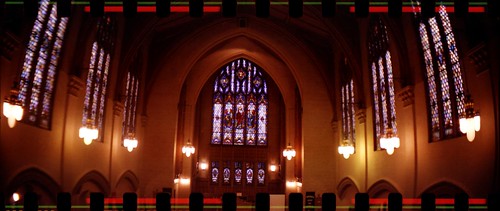
Here are some small things that can make a big difference, especially if you are trying to make money with your pictures.
Setting the white balance correctly. Don't you hate it when you have snapped a picture of a unique winter scene and the snow ends up looking blue? The white balance on your camera should be set to automatic so this doesn't end up happening to you.
This is one of the great things about digital cameras that film just can't give you. When you buy film, you buy according to the lighting condition. If the lighting would change, you would need to change the film. So much for spontaneity. If you can't change the film and it's a one-time chance for a picture, hopefully it can be fixed later.
There is usually an automatic white balance on digital cameras or some presets that you can use for different weather conditions when you are photographing outdoors.
When you are taking pictures of sunsets, set your camera's white balance to cloudy. This adds a glowing quality to the photo and deepens the colors. This setting works well for portraits, too. You will definitely be shocked at how this small setting can pop your photographs to become absolutely breathtaking.
Continue to practice taking a photo of the same thing with a different white balance setting each time. Take notes so you can understand what each setting will do until you can automatically sense what settings to use.
Turn off your digital zoom. Most average camera buyers become confused about digital zoom and optical zoom.
Optical Zoom-This is like the zoom lens on a 35mm camera. It will change the length of the camera lens and will draw the subject closer. This optical zoom ensures that it doesn't affect the quality of the picture.
Digital Zoom-It takes the picture, crops it and then enlarges the rest. This can reduce the quality of your picture.
It is best to turn the digital zoom feature off, if possible. With it turned off, you won't zoom in too close.
If you want a high quality picture but need a closer view of your subject, you should try to move in closer. It's always best to move your feet when you are taking photographs. If you can't get any closer, then set your camera to take a picture with its largest file size. This way, the photo can be cropped, bu still provide an image that is clear.
Digital zoom is good if you are putting your photos online. When you want to print your photos, make sure you have a camera that has a greater optical zoom and then turn off the digital zoom. It does no good to have a close-up image is the quality is awful. Quality should be first.
Eliminating the dreaded demon eye. It has happened to all of us. You take a picture, thinking it is really great and you check them out later and they all have red-eye. There are many software programs that can help you take the red out. This doesn't always look natural though.The best thing to do, is to prevent this from happening in the first place.
Red-eye happens because the camera's flash will reflect off of the subject's retina. If you take a picture of an animal, this will usually turn the eye green, which is very difficult to edit.
All digital cameras come with a red-eye reduction feature. You should always leave this on unless you direct sunlight to photograph. This function is available by flashing a brief burst of light so that the subject includes students, making it less likely that the flash is reflected from the retina.
Another way is to reduce the chances of red eye, to direct the flash so as not to hit the subject's eyes. You can bounce the flash off a nearby object to mitigate its effects.
Only a few tips to help you become a better photographer, if you are using digital images> Cameras. Even if you would like to believe that photography is a great natural gift, there are skills to learn to keep your photos on the theme can go to the next level. All the extras that come with a digital camera, your creativity and help you to create professional-looking photos and maybe some money with your images.